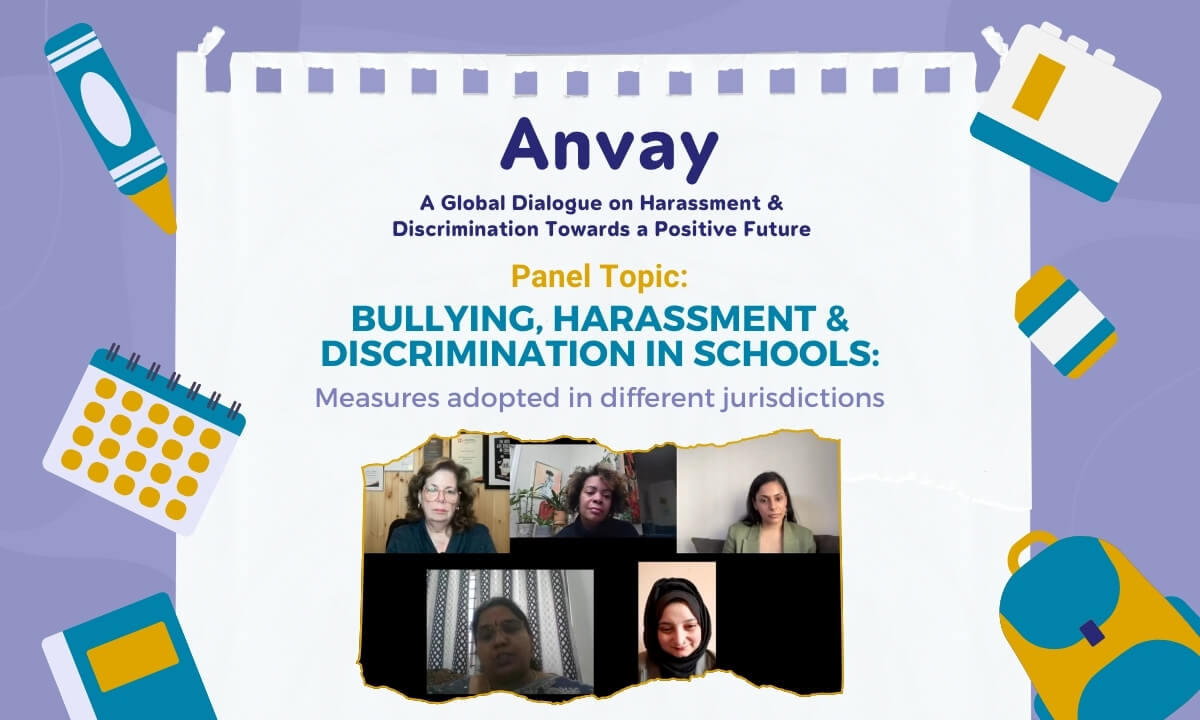At Anvay, the panel discussion “Bullying, Harassment & Discrimination in Schools: Measures adopted in different jurisdictions,” featured insightful contributions from:
- Ju’Riese Colon, Chief Executive Officer, U.S. Center for SafeSport.
- Dr. Charlene Doak-Gebauer, Founder/Chair Internet Sense First, Founder and Chair the AICET Council, Global Chair Childcare and Protection, G100.
- Indu Madhavi Iragavarapu, Professional Development Manager, Nord Anglia Education, The Oakridge International School.
- Tazeen Siddiqui, IIM Udaipur, Managing Director, Mansha Educational society.
- Gauri Poswal, Corporate Communication & Strategy Professional.
The issues of bullying, harassment, and discrimination in schools have garnered significant attention in recent years. Various jurisdictions have adopted measures to address these challenges, aiming to create safer environments for students.
The Historical Context of Abuse in Sports
- The conversation around safeguarding athletes began to gain traction following the revelations of abuse within organizations like USA Gymnastics.
- The culture of fear and the desire to win at all costs allowed abuse to persist for decades. Many athletes felt compelled to remain silent, fearing repercussions on their careers. This environment necessitated the establishment of the U.S. Center for SafeSport, which has since focused on creating policies that prioritize athlete safety across all levels of competition.
- To combat abuse effectively, it is crucial to implement clear policies. The U.S. Center for SafeSport developed comprehensive guidelines focusing on various aspects of athlete interaction, including travel, medical visits, and competitions.
Changing Cultural Norms Around Abuse
- Changing the narrative surrounding abuse is vital for prevention. Experts highlight the importance of demystifying terms associated with abuse and encouraging open discussions.
- Hearing firsthand accounts from athletes who have experienced abuse can be transformative and empower others to speak out. By fostering an environment where stories can be shared without fear, a more supportive culture can emerge.
Empowering Parents and Educators
- The responsibility for safeguarding children extends beyond institutions; parents play a crucial role in ensuring their children’s safety online and offline.
- Experts stress the need for parents to engage in their children’s digital lives actively. This includes understanding what their children are doing online and maintaining open lines of communication about potential risks.
Fostering Responsibility, Care, and Empathy
- Schools are pivotal in shaping students’ behaviors and attitudes. Innovative programs that encourage responsibility—such as having students adopt a plant on their birthday—can instill values of care and empathy from a young age.
- Additionally, identifying signs of bullying early on allows educators to intervene effectively. Strategies such as role-playing and empathy-building exercises can help students understand the impact of their actions on others.
Collaborating Across Communities
- Collaboration among parents, educators, and mental health professionals is essential in creating a holistic approach to safeguarding children. Schools like Nord Anglia Education emphasize the importance of professional development for teachers in recognizing risks and implementing safeguarding measures.
- Engaging parents as volunteers in safeguarding teams further strengthens community ties and enhances awareness.
Addressing bullying, harassment, and discrimination requires a collective effort from all stakeholders—parents, educators, policymakers, and communities. By implementing robust policies, fostering open communication, and promoting empathy among students, we can create safer environments where all children can thrive.
The journey toward change is ongoing, but with shared commitment and accountability, we can make significant strides in safeguarding our youth. With continued focus on prevention, education, and open communication, we can pave the way for a future where every child feels safe, valued, and empowered to reach their full potential.
Authored by Gomathi Sridevi Radhakrishnan, Content Writer Intern, The Legal Swan.


